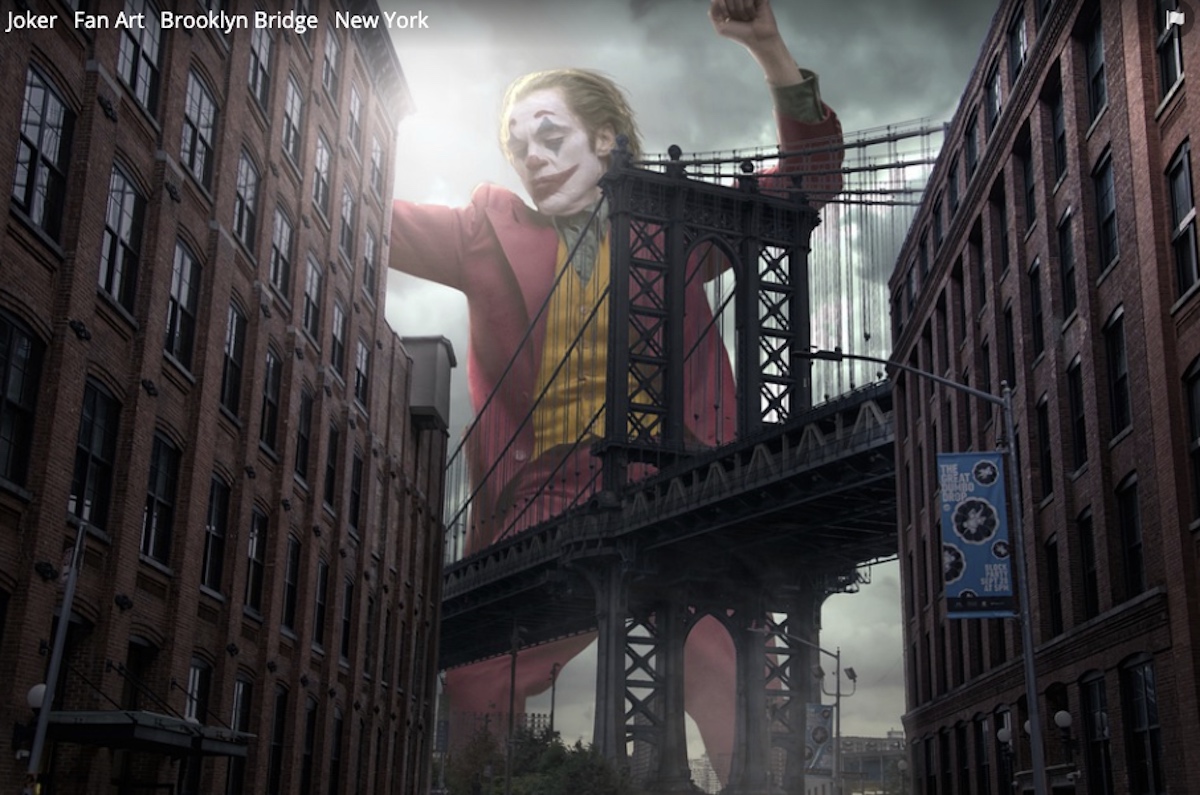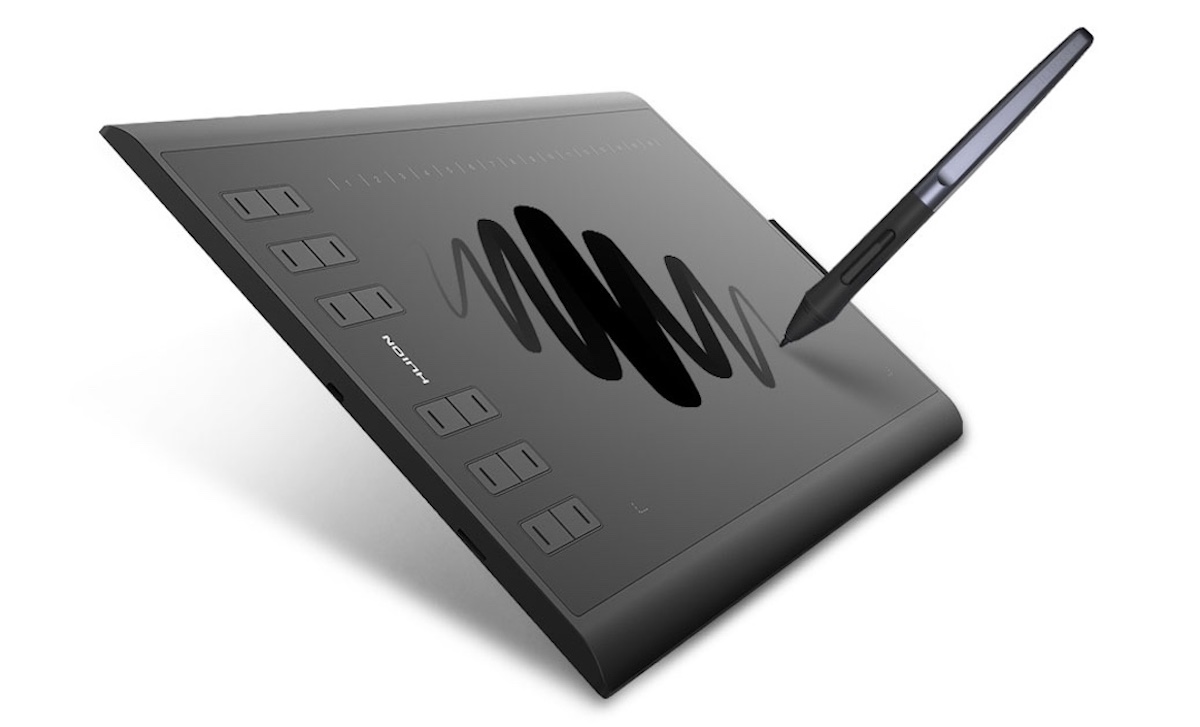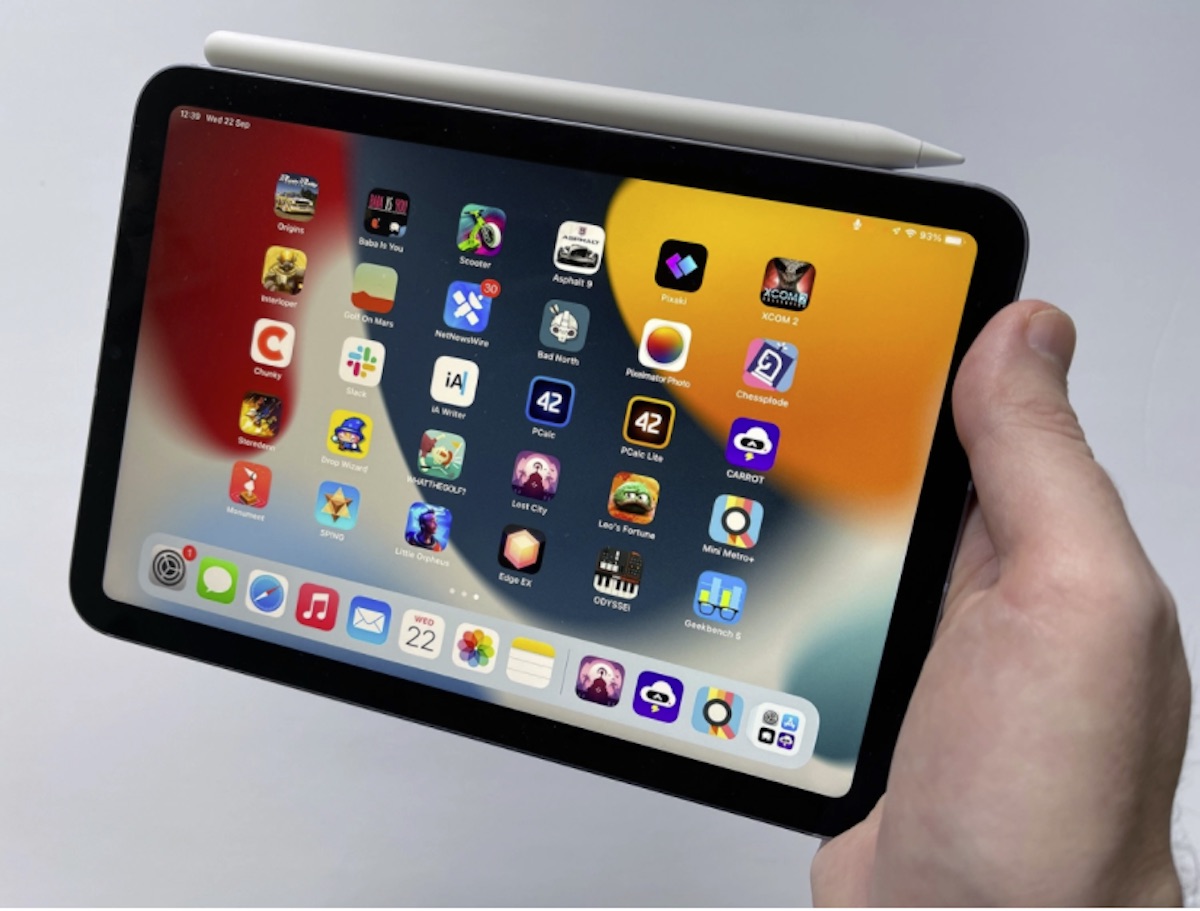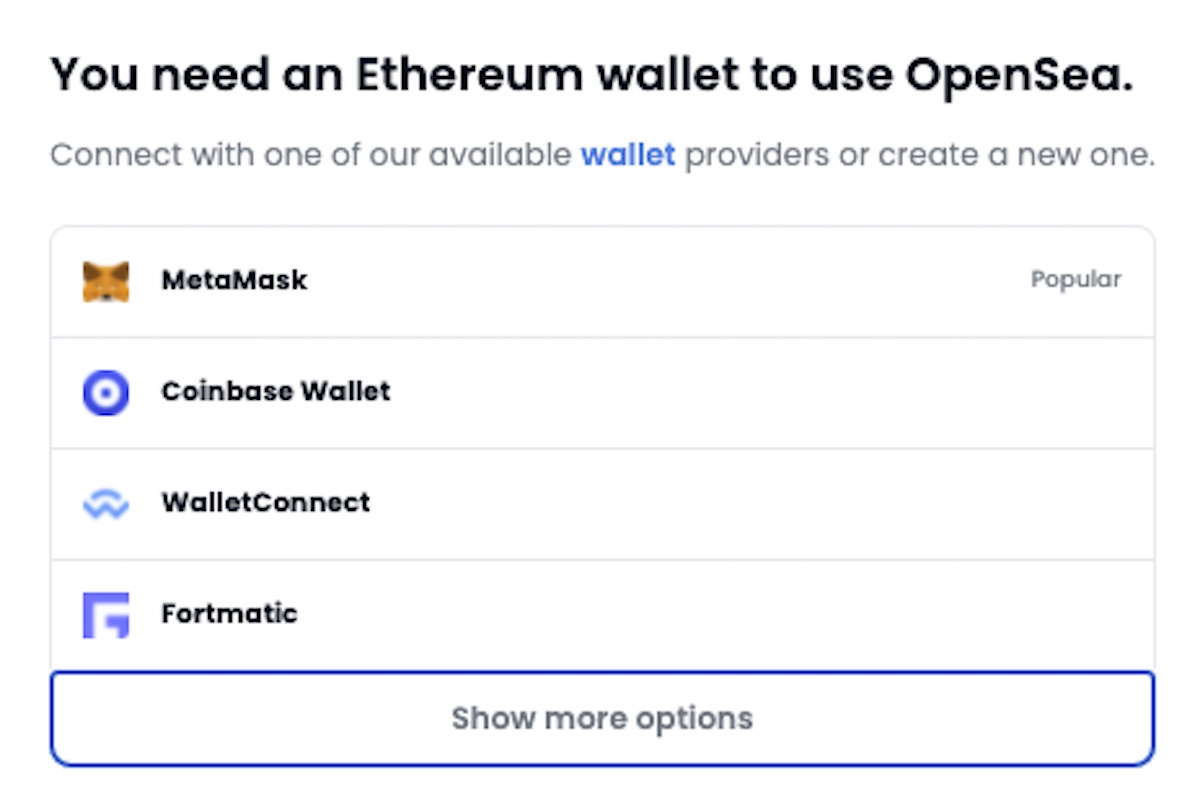Learn How to Make NFT Art In 7 Easy, Practical Steps

When you buy something through one of the links on our site, we may earn an affiliate commission.
Learning how to make NFT art has liberated artists to sell their digital artwork independently from art galleries and art dealers.
According to the blockchain data company Chainalysis, in 2021, the NFT (non-fungible token) art market was at around $41 billion, while the conventional art market was about $50 billion.
This is good news for aspiring digital artists, but understanding exactly how to make NFT art is a must before taking the big step into that world.
What is NFT Art?
Probably the first thing to understand is the difference between fungible and non-fungible assets.
An excellent example of a fungible asset is money: Tom lends Simon a $50 bill. Tom can be repaid with a different $50 bill or two $20 bills and one $10 bill as long as he pays back $50.
In contrast, something like a work of art is non-fungible. It's a specific, identifiable item. If Tom borrowed it, he would have to return the exact thing he borrowed – no substitutions are allowed.
A digital painting, text, a piece of music, or a movie can all be converted into NFTs. Save anything as a multimedia file, and it can become an NFT.
Previously, artists never really got to own something that was entirely digital. Any digital artwork could be copied and sold, and artists had no way of proving a copyright infringement.
NFTs have changed this. Every digital artist can use the tools to sign their work and guarantee it's never plagiarized.

The combination of art and blockchain technology gives you crypto art. Crypto art is like a sub-category of cryptocurrencies that keeps original digital art such as music, poetry, design, paintings, etc.
Crypto art is stored on the blockchain as non-fungible tokens (NFTs) and has financial value. It is a digital asset in the digital universe – you can own it, but you can't touch it.
Of course, the value of the NFT is influenced by the creators' credibility, how rare the artwork is, and how much the collectors want it – much like traditional art forms.
Why Should You Learn How to Make NFT Art?
If you are patient and willing to do your homework, then learning how to make NFT art could be lots of fun. And you never know; it could end up being pretty lucrative.
The Bored Ape Yacht Club, for example, has seen phenomenal success in the NFT marketplace.

The “do-it-yourself” process offered by every NFT marketplace allows artists to sell crypto-art without an art dealer or a gallery.
However, it's essential to look at what NFT art focuses on – namely, the act of selling and not necessarily creating.
Seth Rogin, founder of Akimbo, home of the altMBA, and a very well-known blogger, has some interesting opinions on the trap NFT art may set for fine artists. It may be worth considering his point of view. He feels that the more time and passion artists commit to chasing the NFT, the more time they'll spend persuading people that the value of the tokens will go up. In his own words, “They'll become promoters of digital tokens more than they are creators.” It does not necessarily mean Rogin's point of view is valid for all artists; it's simply something to consider.
Ready to begin? There are a few steps you'll need to take to get your work to market.
Decide on Your Concept
For beginners, an excellent way to get the creative juices flowing is to create geofilters for Snapchat.

This step can be exciting as long as artists don't put too much pressure on themselves. It's the act of doing that brings the inspiration, not waiting for inspiration to arrive.
Open Snapchat and you'll get a list of cool creative tools to play around with.

You can make and design your own geofilters for all occasions. They cost nothing to create, and you can submit your designs directly to Snapchat for approval.
You must have your location-sharing services on and allow Snapchat to see your location. The app can see where you are, and if you are in an area where there is a Snapchat filter available, you will be able to layer it on your photo.
Fan art is another way to go. Think about what you love, and you'll have a direction.
Lots of crypto artists develop fantasy themes with or without characters and creatures. Once you start creating, learning how to make NFT art will become easier and more fun.

Start Creating
The two most important tools you'll need to create digital art are a graphics tablet and painting software.
You don't need to spend a lot of cash to buy a fancy graphics tablet, but if you've ever attempted drawing with the trackpad on a laptop or a mouse, then you know just how difficult it can be.
Some drawing apps are free, and you can find them online.
You use a stylus on a drawing tablet, and the marks you make on the drawing surface are translated onto the tablet's screen or computer monitor.
Once you get used to using a stylus, you can be accurate and feel almost as comfortable as actually drawing on paper.
Below is a list of excellent drawing tablets suitable for budgets of all sizes and catering to all the primary beginner needs.
The Wacom Intuos
The top pick is the Wacom Intuos. It's an affordable entry-level drawing tablet and perfect for artists just starting out.
It comes with Corel AfterShot for photo editing and Corel Painter Essentials 6 for drawing.
The Small Intuos is good if you need portability, at 7.87 x 6.3 x 0.35 inches and 8.8 ounces, while the Medium is 10.4 x 7.8 x 0.35 inches and 14.5 ounces.
It's not a massive difference, but if you need a portable tablet or only have a small desk, then a small drawing tablet would suit you better.

If you’re looking for something a little more professional and can afford it, then the Wacom Intuos Pro is a great choice. It has excellent build quality, accuracy, and precision and comes in both medium and large.
It also has tilt recognition, multitouch capability, Bluetooth, 8 Express Keys, and a convenient touch ring for analog functions.
The Huion Inspiroy H1060P
The second choice is the Huion Inspiroy H1060P. It offers more drawing space than the Wacom Intuos S at 10 inches by 6.25 inches.
It also has 12 customizable Express Keys and a battery-free stylus with 8192 levels of pressure.
It's much cheaper than comparable Wacom tablets. The silicone covering on the digital pen is anti-slip and the grip is comfortable.

iPad 6
If you don't want to go the drawing tablet route and have a tight budget, try the simple iPad 6 and an Apple Pencil. iPad 6 is from 2018, and you'll be able to pick one up for a reasonable price.
The IPS display uses 2,048 × 1,536 super-sharp resolution. Unfortunately, the iPad 6 does not come with the Apple Pencil; you have to buy it separately.

Samsung Galaxy Tab S7
For artists who don't want to use Apple products, the Samsung Galaxy Tab S7 comes with a pen, it's affordable, and has impressive battery life.
It has an 11-inch LTPS IPS LCD screen with 1600 x 2560 pixels and a 20Hz refresh rate. The S Pen works well, and having the suite of drawing apps for Android is a big plus.

If spending money on a drawing tablet is not the way you want to go yet, there are ways to create digital art on your computer or laptop (and ways to sell digital art commissions).
You can learn to use a standard computer mouse with a free digital drawing program such as Gimp, Krita, Artweaver, Sketchpad, or similar.
Or, you can use your fingers. Zooming in and out frequently lets you get into quite a lot of detail at the same time as being able to cover bigger areas quickly.
Just don't let this hold you back; learning how to handle the limitations of drawing with a mouse or your fingers, you will have skills other digital artists may not have.
Learn How to Mint Your Art
Once you've created your most appealing, innovative masterpiece, the next step is to “mint” the digital version of your work.
Minting an NFT is the act of tokenizing the artwork, meaning you have to upload it to a marketplace platform and issue a token to guarantee its authenticity – then it becomes an NFT token.
Next, there are “gas fees” to pay, which initiates the transaction on the blockchain and publishes your artwork as an NFT on a marketplace.
You maintain all commercial rights to the artwork underlying the NFT so you can still market your art by licensing, making prints, or merchandising it.
The person who buys your NFT has the right to sell, trade, or transfer the NFT – and that's it. If your buyer wants to mint a copy of your NFT, make people pay to view it, sell any spin-off object featuring the NFT, or exploit it commercially, they can't do it unless you provide them with written authorization.
Select a Blockchain
There are tons of NFT marketplaces to choose from, so make sure you do your research before making a choice.
NFT auction platforms where you have to pay fees upfront include SuperRare, Nifty Gateway, Foundation, VIV3, BakerySwap, Axie Marketplace, NFT ShowRoom, and many more.
Two of the most popular platforms for artists just starting out are OpenSea and Rarible, and both have pros and cons for sellers.
Some platforms need you to validate or write your NFT on the blockchain. OpenSea and Rarible allow you to do “lazy minting,” which means your NFT is only minted when it's purchased. The buyer pays the gas fees when purchasing the item.
Until then, your NFT is listed on the NFT marketplace just like any other NFT, and the data is safely stored on IPFS (decentralized storage). These two platforms make it easier for new creators to start getting into the world of NFTs.
For beginners, one of the critical areas to watch out for is fees – often referred to as “gas.” You'll be able to work out how much you are prepared to part with and how you decide to mint your NFT when you do your research.
Upload Your Project
For the purposes of this article, this is how you do it with OpenSea. It does not mean OpenSea is the best choice, everything depends on what you want, and enough research will give you the information you’ll need to make an informed choice.

The first thing to do is set up your digital wallet. If you’re going to use OpenSea, at the top right of the landing page – click “create,” and you'll see a list of the Ethereum blockchain wallets the platform supports.

Once you’ve set up your digital wallet, connect it to OpenSea by clicking the wallet icon in the top right corner.
Click “My Collections” and set up your collection. Add social links, a description, profile & banner images, and set a secondary sales fee.
Upload your work, add a title and description, and customize your NFTs with properties, stats, and unlockable content. Finally, list them for sale.
At the bottom of the opensea.io landing page, you'll see their help center. It's very well laid out and gives step-by-step instructions on using the platform.
Promote Your Project
There are several ways to promote your work. We've included a few below but check on the internet; you'll find methods that suit you.
- NFT calendar. The digital art you post as an NFT on online marketplaces is called a drop. It's free and advertises projects from all marketplaces. A fast, easy, and free way to get your project on the map is to add it to the NFT Calendar.
- Use social media. Once your drop is live, let your followers on Instagram, YouTube, Twitter, and other social media platforms know about it.
- Start a thread on Reddit or other suitable sites and get more people interested in your digital art. Some communities are enthusiastic fans of NFTs and welcome new talent.
Sell Your NFT Art
There are plenty of online platforms where you can make and sell NFTs.
The most popular NFT auction platforms include all those mentioned above in the “Select a Blockchain” section. To refresh your memory, they are OpenSea, Rarible, SuperRare, Nifty Gateway, Foundation, VIV3, BakerySwap, Axie Marketplace, NFT ShowRoom, and more.
There are three options for you to sell your item:
- “Fixed price” lets you set a price and sell your NFT immediately.
- The “Unlimited Auction” option allows people to make bids until you accept one of them.
- Lastly is the “Timed auction” that lasts for a preset time.
Conclusion
NFT is a global self-perpetuating craze, and the discussions about what art means and the value of virtual objects continue to rage on. However, the most crucial debate about NFT art is its incredibly harmful effect on the environment.
French artist Joanie Lemercier was so alarmed after discovering just how substantial the environmental costs would be, he decided to cancel a release of several works. “My release of 6 CryptoArt works,” Lemercier wrote on his website, “consumed in 10 seconds more electricity than [my] entire studio over the past two years.”
Artist and coder Everest Pipkin, whose comprehensive overview of the environmental and ethical pitfalls, has this headline: “here is the article you can send to people when they say ‘but the environmental issues with crypto art will be solved soon, right?”
So, any aspiring digital artist about to embark on the voyage of NFT art must ask themselves this difficult question: should artists, in all good conscience, impact the environment so severely by making and selling NFT artwork?
Want to learn step-by-step how I built my Niche Site Empire up to a full-time income?
Yes! I Love to Learn
Learn How I Built My Niche Site Empire to a Full-time Income
- How to Pick the Right Keywords at the START, and avoid the losers
- How to Scale and Outsource 90% of the Work, Allowing Your Empire to GROW Without You
- How to Build a Site That Gets REAL TRAFFIC FROM GOOGLE (every. single. day.)
- Subscribe to the Niche Pursuits Newsletter delivered with value 3X per week
My top recommendations
















